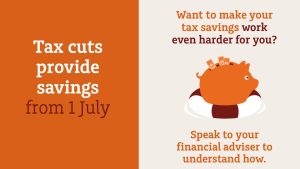Money & Life team – Money & Life contributors draw on their diverse range of experience to present you with insights and guidance that will help you manage your financial wellbeing, achieve your lifestyle goals and plan for your financial future.
With property prices rising at a record rate in many cities across Australia, the ‘bank of mum and dad’ is playing a bigger role than ever as many parents feel pressure to assist their children in buying a home.
For many Australians, home ownership is not just seen as the great Australian dream, but it also represents financial security and an important step in adulthood.
However, rapidly escalating prices, particularly in highly-desirable capital cities such as Sydney and Melbourne, has put that first step on to the property ladder out of reach for many young people. This in turn has led to many children turning to their parents for assistance.
According to the AFR, parental contributions are averaging more than $89,000, an increase of nearly 20 per cent in the past 12 months. In fact, the ‘bank of mum and dad’ has about $34 billion in loans, making it the nation’s ninth-largest residential mortgage lender and bigger than HSBC, AMP and Bank of Queensland, according to data from Digital Finance Analytics.
For parents who want to help their children into home ownership, there are a number of strategies and pathways to consider.
Contributing to a deposit
Most lenders recommend prospective home buyers have 20% of their loan available as a deposit, and contributing to this deposit is often what first comes to mind when parents think of how they can help their children, as scraping together a deposit is generally considered the most difficult step in buying a first home.
If you are contributing a cash amount, make sure you have clear discussions with your children about any expectations related to your contribution – for instance, if you are making the contribution in lieu of leaving them money in your will, make this very clear and don’t hesitate to put it in writing, especially if you are doing this for one child but not others.
Acting as guarantor
A guarantor home loan is when someone, in this case a parent, offers up part of their home equity as security to top up the buyer’s cash deposit.
It means the buyer only needs a small deposit or sometimes none at all, and avoids paying costly lender’s mortgage insurance (LMI).
It’s crucial that you only agree to act as guarantor if you have full confidence in your child’s ability to make their loan repayments. If they default, you will be liable and your own home may be at risk.
Providing a loan
Whether through an official loan provider or a private agreement between parent and child, you may be in a position to loan your children the money they need to buy a home or for their deposit.
Keep in mind that this assumes they will be able to make their official home repayments as well as paying back the initial loan, and it is important to have honest discussions that clarify how they will manage this, and a timeframe for repayment.
Always put your well-being first
It may sound selfish and like it goes against what we’re told as parents, but it is crucial that older Australians put their own financial security first.
If you are simply not in a position to assist your child, do not feel pressured to put your financial wellbeing at risk in order to help them, especially if you have doubts about their ability to manage the repayments and responsibility of a home loan.
In this case, have a frank discussion with them about your will and what you will be able to provide for them after you have passed. You can also direct them to seek professional financial advice.
This article first appeared here, in Money & Life.
Disclaimer: The views expressed in this publication are solely those of the author; they are not reflective or indicative of Financial Services Partners position and are not to be attributed to Financial Services Partners. They cannot be reproduced in any form without the express written consent of the author. The information provided in this document, including any tax information, is general information only and does not constitute personal advice. It has been prepared without taking into account any of your individual objectives, financial situation or needs. Before acting on this information you should consider its appropriateness,
having regard to your own objectives, financial situation and needs. You should read the relevant Product Disclosure Statements and seek personal advice from a qualified financial adviser. From time to time we may send you informative updates and details of the range of services we can provide. If you no longer want to receive this information please contact our office to opt out. Financial Services Partners Pty Ltd ABN 15 089 512 587, AFSL 237590







